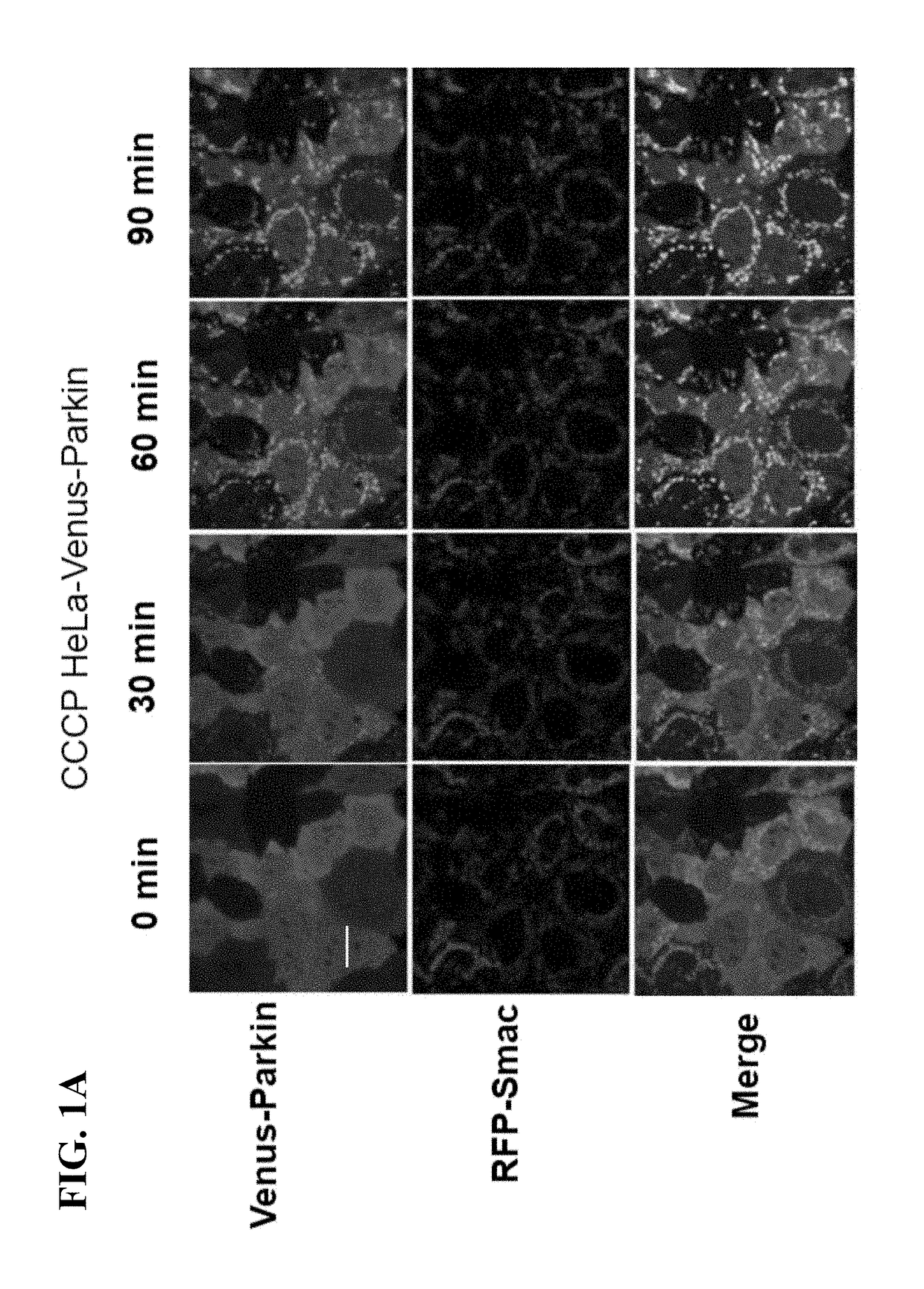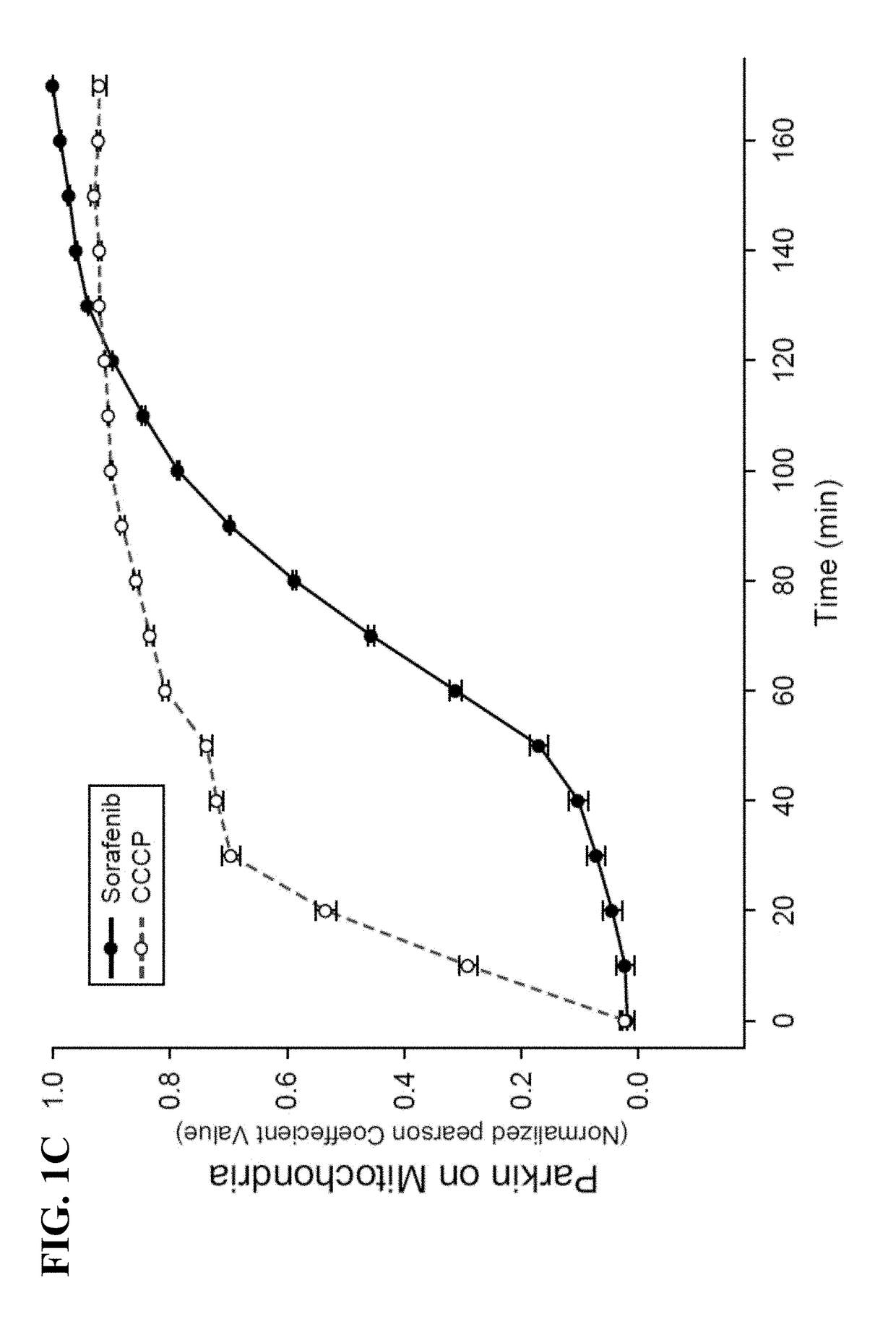Methods for predicting cancer patient's clinical response to Anti-cancer compounds
a cancer patient and clinical response technology, applied in the field of cancer patients' clinical response to anticancer compounds, can solve the problems of no credible predictive biomarkers for sensitivity or resistance to sorafenib, regorafenib, and the overall outcome of both drugs still far from satisfactory, and achieves improved survival, improved disease control rate, and longer time to progression
- Summary
- Abstract
- Description
- Claims
- Application Information
AI Technical Summary
Benefits of technology
Problems solved by technology
Method used
Image
Examples
examples
[0081]Commercially available reagents referred to in these examples were used according to manufacturer's instructions unless otherwise indicated. The source of certain reagents is described below.
[0082]Constructs-Venus-tagged Parkin and mTurquoise-tagged Parkin S65A constructs were described previously (Zhang, C., et al., (2014), supra). PINK1-EGFP was constructed by inserting EGFP at carboxyl terminus of PINK1 in the background of CSII-EF-DEST-IRES-Hygromycin lentiviral vectors. pMSCV-CMV-puro-IMS-RFP was used as mitochondrial marker as described previously. LC3 and murine Bcl-2 were cloned into CSII-EF-CFP-DEST-IRESHygromycin lentiviral vectors to get CFP-LC3 and Bcl-2 constructs. Cell culture, transfection and reagent treatment—HEK293T cells were obtained from the ATCC (American Type Culture Collection). Parkin and PINK1 wild type and null MEF cells were described previously (Gautier, C. A., et al., (2008) Loss of PINK1 causes mitochondrial functional defects and increased sensi...
PUM
 Login to View More
Login to View More Abstract
Description
Claims
Application Information
 Login to View More
Login to View More - R&D
- Intellectual Property
- Life Sciences
- Materials
- Tech Scout
- Unparalleled Data Quality
- Higher Quality Content
- 60% Fewer Hallucinations
Browse by: Latest US Patents, China's latest patents, Technical Efficacy Thesaurus, Application Domain, Technology Topic, Popular Technical Reports.
© 2025 PatSnap. All rights reserved.Legal|Privacy policy|Modern Slavery Act Transparency Statement|Sitemap|About US| Contact US: help@patsnap.com



